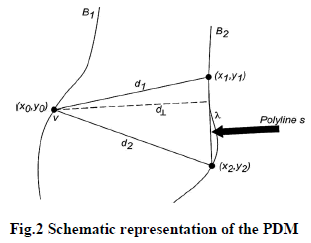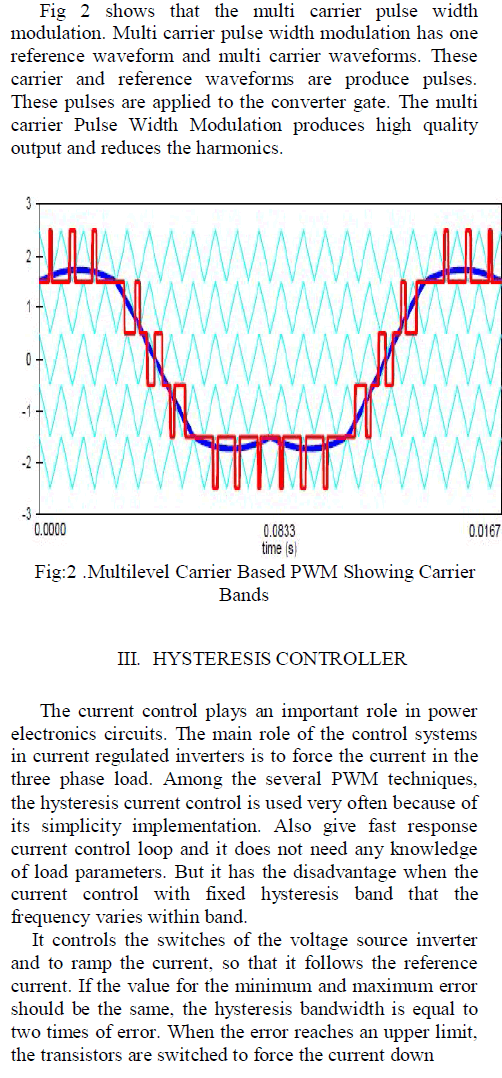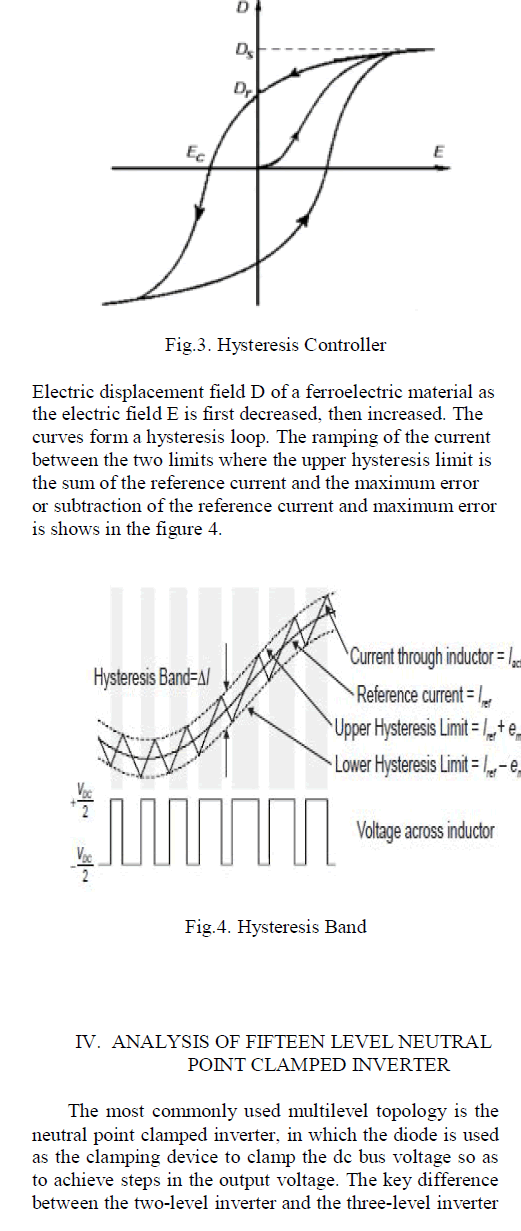ISSN ONLINE(2319-8753)PRINT(2347-6710)
ISSN ONLINE(2319-8753)PRINT(2347-6710)
| OLOTO, I.N1 IYAYI, A.O 2 Senior Lecturer, Dept. of Geology, university of Port Harcourt, Nigeria 1 Graduate Researcher, Dept. of Geology, university of Port Harcourt, Nigeria 2 |
| Related article at Pubmed, Scholar Google |
Visit for more related articles at International Journal of Innovative Research in Science, Engineering and Technology
The petrographic analysis were carried out on indurated sediments obtained from Amenu-Amauro environ in Afikpo area, in the south Benue Frough, Nigeria. The study area lies between longitudes 7o 5055’N and 6o00’Ns and located within the Abakaliki anticlinorium of the south Benue trough.The infilled sediments of the trough had undergone deformation and affected by the magmatic activities during cenomanian and santonian episodes..Petrographic analysis indicated the presence of metasediments including Met greywacke arkoses sandstone with prolific globular exsolved texture poorly sorted lithnic arenite with elongale grains some showing reaction rums.Buchile of limestone with crystallized shell, sandstone and slate or high indurated shale with section showing globular, plank tonic foraminifera tests.The textures are partly relict indicating retention of original pre-metamorphic sedimentary features which have not been obliterated by metamorphism, hence, they are typomorphic
Keywords |
| Petrography, Amenu-Amauro, Afikpo Basin, Metamorphism, Itrusives |
INTRODUCTION |
| The study area lies between longitude 7050I and 7052I30II E and latitude 5055Iand 6°00I N within the South Benue Trough.The Benue Trough is an intra-continental rift basin characterized by tectonic and magmatic activities during cretaceous times. The Benue trough can be subdivided into Lower, Middle and Upper parts that were affected by Santonian tectonic activity. Regional Santonian compression deformed the Benue trough proper inverting the main depocentre of the Abakalilki trough and subsequently creating the Afikpo and Anambra basins to the Southwest and Northeast respectively. In the Afikpo basin, the Campanian- Maastrichtian succession comprises the Nkporo, Mamu, Ajali and Nsukka Formations. In the case of this research, the Lower Benue Trough outcrop as exposed along other parts within the study areas studied in details in other to extract all possible available information necessary to the field of geosciences [5,7]. |
 |
II. AIM AND OBJECTIVES OF THE STUDY. |
| Detailed study of the area in order to draw inferences petrographical properties of the area which will unravel the stages of metamorphism in the study area . |
| A. Location of the study area |
| The area under study is bounded by longitude 7050’ and 7052’30E and latitude 5055’and 6°00’N. Other neighbouring towns include, Amechi, Amauro, Amenu, Ekekposi, Obiagumebi, Umunaka. |
| B. Regional Stratigraphic Settings |
| The Afikpo basin which is in the southern Benue trough, being that the trough itself is a continental-large scale intraplate tectonic mega structure, which i s p a r t o f t h e mi d -Af r i c a n r i f t s y s t em i n i t i a t e d i n t h e l a t e s t J u r a s s i c t o e a r l y c r e t a c e o u s a n d i t i s r e l a t e d t o t h e o p e n i n g o f c e n t r a l a n d s o u t h At l a n t i c o c e a n [ 4 ] . The southern Benue trough comprises the tectonical ly inverted Abakaliki anticlinorium, Afikpo and Anambra basin flanking the anticlinorium to the east and west respectively. The development and evolution of the tectonic, of the Afikpo basin, and the strat igraphic sett ing of the study area wi ll be bet ter appreciated by renewing developments in the d e p o s i t i o n a l a r e a s i n c e e a r l y cretaceous structural unit of the south east Niger ia [2,3]. (i) Albian The oldest sediment in the south eastern Nigeria is around Abakaliki area. The sediments are unnamed and const itute part of the Asu River Group. Re yme n t , i d e n t i f i e d t h e t y p e a r e a t o b e t h e a l o n g As u Ri v e r . T h e sediments consist of Abakal iki Shale with sandstone and rather poorly banded sandy shale. The fold axis stretch NE-SW. these beds have been recorded to be associated wi th lead - zinc mineralizat ion. The shale is deeply weathered and is found to contain Echinoids, some Pelycepods and Gastropods [1,5]. |
| (ii) Cenomanian Beds of this age are restricted to the south eastern portion sedimentary basin south eastern Nigeria. They belong to the Odukpani Formation and consist of arkosic sandstone, limestone and alternating limestone with shale, which became predominately shaley in the uppermost part. |
| (iii) Turonian Deposits of this age belong to Eze-Aku Formation. The type locality is the Eze-Aku valley in south eastern Nigeria. It consists of hard grey to black shale and siltstone with frequent facies changing to sandstone or sandy-shale. |
| (iv) Coniacian-Santonian The evolutiom of the Abakaliki Basin started with the opening of the Benue Trough in the early Cretaceous with the earliest deposit on the rift floor which are unnamed base conglomerate of continental origin. They are overlain by the Albian to Santonian succession suite divisible into Asu River Group at the bottom, Eze-Aku Formation and Agwu Formation. These Formations are separated by significant unconformities representing the time interval between the major sea incursion. Each succession consists mainly of shaley lithofacies with large sand bodies [6]. |
| The Albian Santonian succession is also associated with basalts, micro diorites and pyroclastics outcrops exhibiting alkaline to theolitic affinities . The succession was uplifted and became the topographic (Ab a k a l i k i An t i c l i n o r i um) ,which supplied the bulk of the Afikpo basin fill. (v) Campanian-Maastritchtian The thermal regime responsible for the Santonian upliftment remained active until the end f the Eocene. The period is characterized by spasmodic quakes in the Abakalilki region and corresponding transgression and regression in the Anambra basin. These events along with the paleomorphology of the southern Benue trough and proximity of sediment source area controlled sedimentation and paleogeographic reconstruction of the Anambra basin. Campanian sediments belong to the base of Nkporo Formation. The filling of the Anambra basin took place during the two depositional cycles from the Campanian to early Maastrichtian to Eocene. The commencement of the Campanian-Maastrichtian is marked by a short transgression followed by a regression[2,5,6] . |
III. METHODOLOGY |
| The method of study employed in this research work is grouped into three to enable one obtain a comprehensive data. These include; Reconnaissance studies, Field work and Laboratory analysis. |
| A FIELD WORK |
| Here, detailed mapping was carried out in the field in all locations where fresh samples were gotten. Fresh samples were collected at exposed outcrops along road cuts and other areas along the area of study. The samples after they were collected were properly labelled, numbered according to their various locations and sequence in which they were picked. A field description of samples was done in order to determine the physical properties of the rock these include; texture, colour, size, etc. Acid test using Hydrochloric acid was used to determine the presence of calcareous materials in the samples. |
| B. LABORATORY ANALYSIS |
| Samples brought to the laboratory passed through a series of analysis like petrographic analysis and photomicrographing. |
| (i) petrographic analysis: This is described as Thin-section analysis and it is carried out on indurated rocks since the samples cannot pass through the sedimentologic analysis which is carried out on soft rocks. Their grains are usually consolidated and cannot be disintegrated by boiling and application of sodium bicarbonate. Samples were cut into smaller pieces using the diamond saw machine. After which they were polished using carborumdum powder to help get a smooth sample, polishing of the micropaleontologic slides, mounting the samples on the glass with a refractive index of about 0.3mm by a rotary machine with the application of carbonrundum powder. The glass slides containing the samples were then placed under the petrographic microscope for further study. A pair of lens with magnification of 80 was used for this petrographic study. Petrographic studies of eight samples were carried out. These samples are indurated and were obtained from different locations. Sample 1 from Amechi, sample 2b from Obiagumebi, samples 3a, b, c from Amenu, sample 4 from Asu-River, sample 5 from Amauro and sample 6 from Idima Edda |
| (ii) Photomicrograph: This is a photograph or digital image taken through a microscope or similar device to show a magnified image of an item. It helps to show a clear picture of the biological components and minerals found in the rock. The diagenetic development is as well ascertained. This photo- micro graphing stage involved taking Plane and Crossed polarized images of these samples obtained from the field study to reveal features not naturally visible to the eyes. It also involved taking these samples with different magnifications to give a clearer pictorial view( see plate 1-3). |
| (iii) Lithologic Analysis This is done by classifying or describing the rocks into their various physical properties and the geologic formations in which they belong to. Some of the physical features include; colour, texture, rock type, presence of macrofossils, mineralogy, calcareous or non-calcareous rocks. |
IV. RESULTS AND INTERPRETATION |
| Lithologic and petrographic analyses were carried out on ten samples obtained from various locations along Amenu- Amauro and environs located in the Southern Benue Trough. They were all hard rocks of sedimentary and metamorphic types. The results of the analysis are presented below |
| (i).Location 1: Amechi; sandstone. Heavy/indurated weathered Petrographic Description; Arenite (ferruginized hornfels tightly polygonal granoblastic texture Interlocking, poorly sorted, mosaic of feldspar,biotite and quartz Grains, no authigenic cement, but a concentration of opaque,glassy material along some grain boundaries,grains elongated parallel to bedding plane. metamorphic texture, cuspic –texture,with clouded grains of feldspar and surface of prolific rods,threads and of exsolved texture. |
| (ii) Location 2: Eke Okposi; Sandstone, Indurated with numerous burrows Petrographic Description; Argillaceous rock –Pellitic hornfels |
| (iii). Location 3: Obiagumebi; sandstone (baked). Heavy indurated with dark mafic streaks. Petrographic Description; Lithic grewacke hornfels feldspathic greywacke (Buchite) with oolitic exsolution feature. unsorted aggregate of angular grains of sand and coarse silt set in an abundant argillaceous matrix. Grains are quartz, feldspar, mica rock chips. Matrix corroded the margins of the grains |
| (iv). Location 4: Amenu sandstone Shale /boundary separating the third rock. Contact of 3 different rocks a, b, c, d rock samples. C is fossiliferous, massive rock with different rock types Petrographic Description: Slate?/shale-quartz/clay grains, lenticular, even grained, finely divided.Greywacke (bioclastic limestone) unsorted poorly sorted consisting of shell fragments, quartz, feldspar. prolific shells (macroshells) coarse coquina composed of subangular molluscan shell fragments and detrital quartz grains, partially cemented by fine grained calcite. Shells consist of original fibrous calcite and aragonite |
| (v) Location 5 Amenu (Left side of the Amasiri road); Sandstone, white, arkosic, fine grained (ferruginized) Petrographic Description; Argillaceous rock –Pellitic hornfels |
| (vi). Location 6 Asu River; shale, baked. (probably metamorphosed shale ) black Petrographic Description; Intercalated aggregates of finely divided polygonal clay matrix, quartz grains and micacouus carbonaceous strings |
| (vii). Location7 Amauro ; White grey shale overlying crossbedded sandstone Petrographic Description; Argillaceous rock. Clay aggregates, quartz grains and micaceous carbonaceous strings . Finely divided dark mass of clay mineral, not distinguishable |
| (viii). Location 8 Idima Edda; Shale (ferruginized) and sandstone/alternating .sandstone/shale ridges, dipping sharply, Slate, Petrographic Description Slate Highly fossiliferous with planktonic calcareous foraminifera,parallel wavy lamination, black, argillaceous. Clay/quartz grains, lenticular subrounded, even grained,prolific exsolved globular texture Argillaceous rock. Elongate strings of clay mineral aggregates intercalated with black carbonaceous organic aggregates densely packed. |
 |
| 1. Hand specimen of coarse grained sandstone from Amechi area of Afikpo.2. thin section of lithic sandstone grains 3. Thin section of lithic sandstone showing mortar shape between larger and smaller grain.. 4. Thin section of lithic sandstone showing angularity of grains |
 |
 |
| 1. Hand specimen of coarse grained arkosic sandstone highly indurated 2. Thin section of arkosic sandstone under plane polarized light showing grains dispersed in a matrix of clay 3. Thin section of arkosic sandstone under crossed polarized light showing angular grains.. 4. Thin section showing irregular shape of grains not connected to each other and dispersed in a matrix of clay. |
V. DISCUSSION AND CONCLUSION |
| Lithologic and Petrographic analyses conducted on the ten samples obtained from locations along of Amenu – Amauro and environs indicated varieties of sandstones lumped under the single name “Sandstone”. These varieties includes Lithic arenite, Arkosic Arenite, Thin laminated sandstone, greywacke, metasediment including slate, indurated shale with section showing planktonic globular foraminifera. The infilled sediments of the trough had undergone deformation and affected by the magmatic activities during cenomanian and santonian episodes. The sediments analyzed form part of the cenomanian to santonian folded strata of Asu River group Amasiri, sandstone, Eze-Aku state and Agwu Shale to what extent have there rocks been affected by the rocks were obtained from various localities such as Amechi, Eke Okposi, Obiagumebi, Umunuka, Amenu, Asu River, Amauro and Idima Edda. The rocks were classified as heavy, sandstones, pebbly sandstone indurated arkosic sandstone , Shale and Slate [8]. |
| Petrographic analysis indicated the presence of metasediments including Metagreywacke arkoses sandstone with prolific globular exsolved texture poorly sorted lithnic arenite with elongate grains, some showing reaction rims. Buchite of limestone with crystallized shell, sandstone and slate or high indurated shale with section showing globular, plank tonic foraminifera tests.The textures are partly relict indicating retention of original pre-metamorphic sedimentary features which have not been obliterated by metamorphism, hence, they are typomorphic. The textures can be classified as blastopsephitic, blastopsammitic and blastopelitic referring to relict sedimentary textures being recognizable as having belonged to conglomerates (or breccias), sandstone and mudstones/respectively. The textures showed services of metarnorphic texture, from the initial globular orlithic, exsolution textures, to nucleation and wavy boundary adjustment and the polygonal granobalstic and triple point boundary plagioclase and is clouded with exsolved rods, threads of black iron and other accessory minerals. These textures confirm the metamorphism of the infilled sediments of the Benue trough as a result of magmatic activities during Cenomanian and Santonian episodes of deformation and magnetism [10].The formations affected are the Asu Rivers Group, Amasiri Sandstone, Eze Aku shale and Agwu Shale. |
References |
|